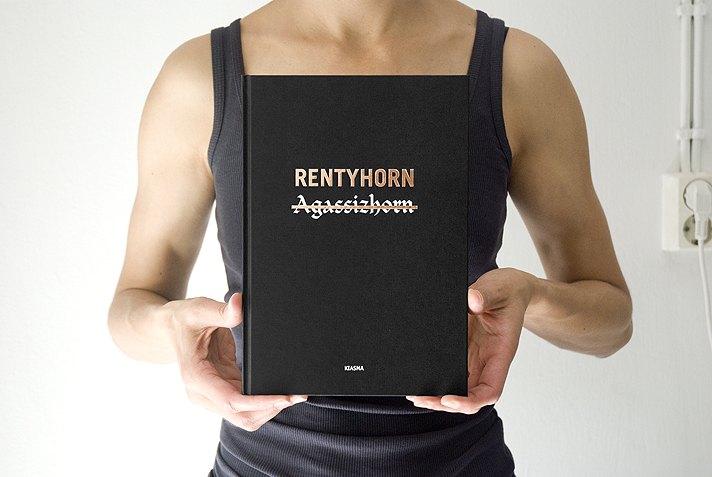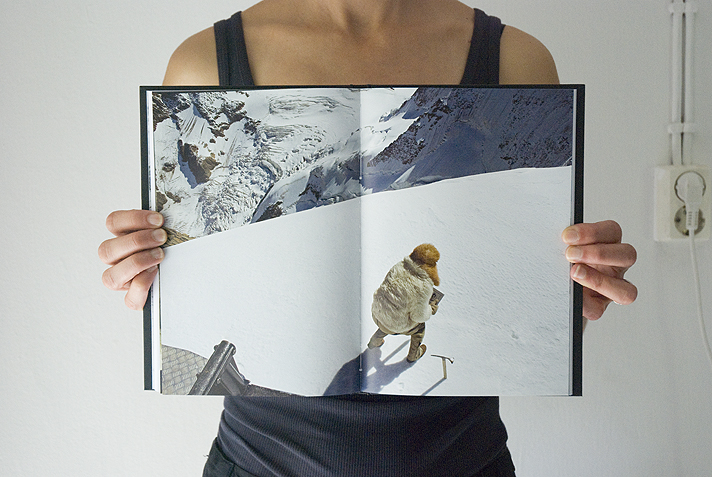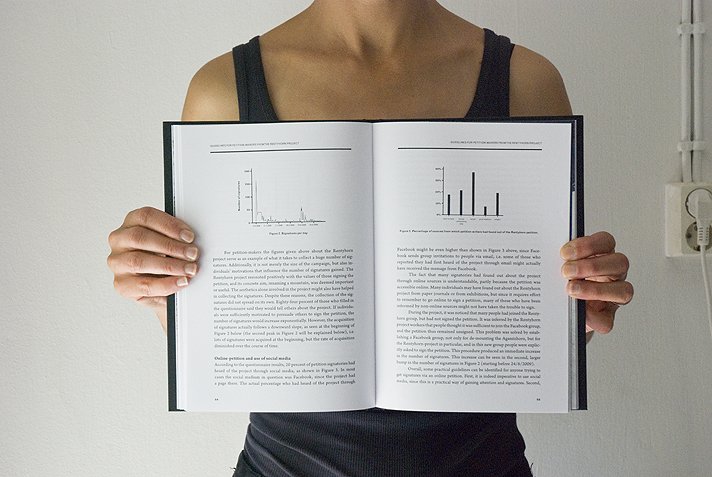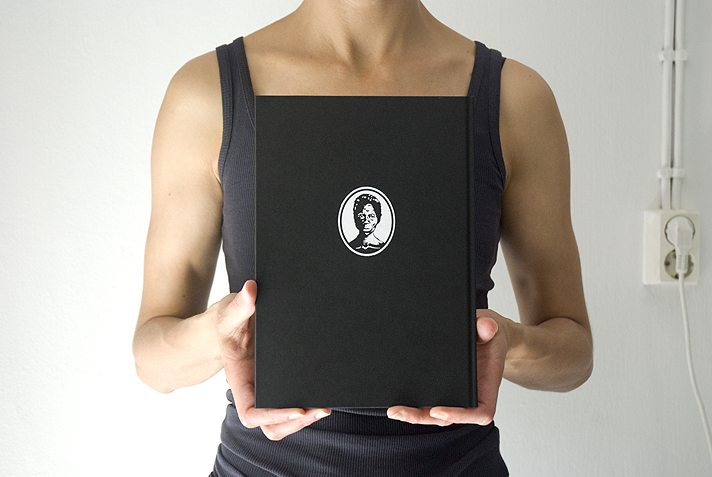Rentyhorn
2010
This book has been produced to document the Rentyhorn
artistic project by Sasha Huber. The process culminated in an
installation that was first exhibited in autumn 2008. The whole or parts
of the installation has since been shown in several national and
international exhibitions and events. In 2010, the Rentyhorn
installation became part of the permanent collections of the Museum of
Contemporary Art Kiasma, Helsinki. This ongoing journey of discovery
began in the summer of 2008, when Hans Fässler invited Huber to join the
Transatlantic committee “Demounting Louis Agassiz”. The book includes
texts from Europe and the Americas, by curators, historians, a
philosopher, a social scientist, a journalist and an artist.
Editor: Sasha Huber
Texts: Pirkko Siitari, Hans Fässler, Hans Barth, Suzana Milevska, Maria Helena P. T. Machado,
Mikael Wahlström, Johanna Sarjas, Patty Colman, Petri Saarikko.
112 Pages, b/w and color Offset,
Hardcover with foiling and embossing,
17 x 24 cm, First Edition.
ISBN 978-951-53-3267-7, ISSN 0789-0338
A Museum of Contemporary Art Kiasma Publication 126 / 2010
Supported by: Arts Council of Finland
20¤ + shipping
Available in St. Gallen, Switzerland: Comedia bookstore and at the culture cinema space Kunststück.
A share of the sale is donated to Partners in Health in Haiti.
(T)races of Louis Agassiz: Photography, Body and Science, Yesterday and Today
2010
Exhibition and book project by Maria Helena P. T. Machado and Sasha Huber.
The Project
The abolition of the Atlantic slave trade and of slavery provided a special context for textual and visual forms of classifying humankind in terms of racial hierarchies, based on the notion of fixed racial differences, both intrinsic and extrinsic. Many racialist thinkers even denied the unity of humankind, proposing the existence of distinct human races. Through the use of new technical resources, such as photography, these theories developed new ways of capturing and representing the human body, seen as a vehicle of racial traits to be revealed by the discriminating eye of the scientist or scholar. The science of race, although rapidly discredited in terms of its scientific ambitions, has persisted to this day in the ways that different ethnic groups as well as colonial or postcolonial peoples continue to be seen and represented visually. This project includes a public exhibition, an academic discussion, and a publication, drawing together historical photographs, critical texts, and contemporary artistic works.
The Exhibition
Teatro di Arena, Rua Dr. Teodoro Baíma, 94, São Paulo, Brazil. 26.8–25.9.2010. Extended until end of October 2010.
The exhibition includes a selection of 40 photographs from Agassiz’s travels in Brazil from 1865 and 1866. He was one of the most prominent natural scientists of the nineteenth century, an adamant defender of the natural inequality of the races and a pioneer proponent of racial segregation, which developed in the USA later in the century. It is the first time that Harvard University’s Peabody Museum has granted permission for the publication of a significant portion of this collection.
The exhibition also presents new artworks by Sasha Huber, including a self-portrait that replicates and comments the racial images of Louis Agassiz along with the images and video installation from an intervention performed at the Praça Agassiz in Rio de Janeiro in July 2010.
The Book
(T)races of Louis Agassiz: Photography, Body and Science, Yesterday and Today is also a book edited by Maria Helena P. T. Machado and Sasha Huber. The book draws together collaborators who approach the subject from different perspectives, addressing both the past and the present. It includes scholarly texts and art criticism, along with the personal manifestoes of activists and artists. In examining a series of nineteenth-century racial photographs, the book reflects upon how images associated to thoroughly outdated beliefs and scientific knowledge continue to haunt not only visual culture but also the politics of memory and forgetting in the twenty-first century.
Editors: Maria Helena P. T. Machado and Sasha Huber
Collaborators: Flávio dos Santos Gomes, Hans Fassler, John Monteiro, Maria Helena P. T. Machado, Sasha Huber & Petri Saarikko and Suzana Milevska
Pages: 192
ISBN: 978-85-63537-02-7
Publisher: Capacete Entretenimentos on the occasion of the 29th São Paulo Biennial, 2010
Printed: São Paulo, Brazil
Supporters: Frame-Fund, Finnish Arts Council, Capacete, São Paulo Biennial.
About Maria Helena P. T. Machado
Maria Helena P. T. Machado is Associated Professor of History at the University of São Paulo. She has published original research on slavery, abolition, and the Agassiz Expedition to Brazil; and is author of the book Brazil through the Eyes of William James. Letters, Diaries, and Drawings, 1865-1866. Member of the Transatlantic Committee Demounting Louis Agassiz since 2009.




Rentyhorn - The book, 2010.
